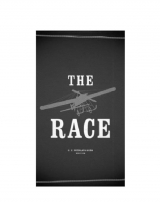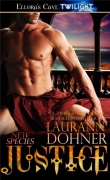
Текст книги "The Race"
Автор книги: Clive Cussler
Жанр:
Прочие детективы
сообщить о нарушении
Текущая страница: 10 (всего у книги 21 страниц)
16
“HAVE THE ODDS CHANGED FOR JOSEPHINE?” Isaac Bell asked the bookie Johnny Musto two nights before the race.
“Still holding at twenty-to-one, sir. A thousand dollars on the Sweetheart of the Air will pay youse twenty thousand.”
“I’ve already bet twothousand.”
“Indeed you have, sir. Admiring your brave sporting instincts, I’m speculating upon the potential value of increasing your initial investment. If the little gal wins, youse can buy yerself a roadster, and a country estate to drive it to.”
Enveloped in clouds of violet cologne, and attended by marble-eyed thugs pocketing the cash and watching for the cops, Johnny Musto was strolling the infield, muttering, “Place yer bets, gentlemen, place yer bets! Odds? Name ’em, they’re yers. One hundred dollars will earn youse fifty if Sir Eddison-Sydney-Thingamajig’s brand-new Curtiss Pusher clocks the best time to San Francisco. Same holds for Frenchie Chevalier driving his Blériot. One-to-two, gents, one-to-two on Chevalier. But if Billy Thomas flies faster for the Vanderbilt syndicate, one hundred will receive one hundred back.”
“How about Joe Mudd? What are the odds on Mudd?” asked a sporting man with a large cigar.
Johnny Musto smiled happily. Clearly, Bell thought, a man blessed by fortune.
“The workingman’s flying machine offers a rare opportunity to win big – three-to-one. Three hundred dollars for a hundred ventured on Joe Mudd. But if you’re looking for a sure thing, bet one hundred dollars on Sir Eddison – So-and-So – Thingamajig and win fifty bucks to take your goil to Atlantic City. . Hold on! What’s that?” A man dressed in mechanician’s vest and flat cap was whispering in his ear. “Gents! The odds on Sir Eddison – So-and-So – Thingamajig are changing. One hundred will win you forty.”
“Why?” howled a bettor, disappointed to see his potential winnings diminish.
“His chances of beating everybody just got better. His mechanicians chopped the canard off the front of his machine. They found out they don’t need a front elevator, already got one in the back. Sir-Eddison – So-and-So – Thingamajig’s Curtiss Pusher is racing headless. Nobody can beat him now.”
THAT SAME NIGHT, the saboteur who had set the thermo engine on its murderously destructive final flight, killing Judd and laying waste to several aeroplanes, stood nervously rubbing his arm as he watched Sir Eddison-Sydney-Martin’s mechanicians make final adjustments on the Englishman’s newly headless Curtiss. Removing the front elevator had made the pusher look very trim.
The saboteur had studied it earlier while they were flying it in the last of the evening light, and he had agreed with all in the infield who knew their business that the Curtiss was flying considerably better than before, and somewhat faster. The bookmakers, who were already enamored of the Curtiss Motor Company’s new ninety-horsepower, six-cylinder engine – a reliable “power unit,” by all accounts – led the stampede to declare that the headless Curtiss Pusher was the aeroplane to beat, particularly in the hands of a champion cross-country aviator like the English baronet.
At last the mechanicians covered the machine in canvas shrouds, turned off the generator powering their work lights, and trooped home to their bunks in the train yard. Keeping a sharp eye peeled for roving Van Dorn detectives, the saboteur took a carpenter’s brace and bit from his tool bag and went to work.
“YOUR CERTIFYING EXAMINATION was scheduled to start five minutes ago, Mr. Bell.”
The representative of the Aero Club, waiting beside Bell’s machine, gestured impatiently with his clipboard.
Bell vaulted into the American Eagle’s driving seat, tossed his hat to a wing runner, and pulled on his goggles and helmet. “All set!”
He had just finished hammering out last-minute tactics with Harry Warren. Andy and the boys had the monoplane waiting on a grass strip, with the motor warmed and chocks holding the wheels.
“In order to qualify for your pilot’s license, Mr. Bell, you are required to ascend to one hundred feet and fly around the pylon-marked course. Then you will ascend to five hundred feet and remain there ten minutes. Then you will demonstrate three methods of descent: a safe volplane in a series of circles, a gradual ocean-wave downward coast, and a sharper spiral dip. Is that clear?”
Bell grinned. “Is it O.K. if I keep moving while remaining at five hundred feet for ten minutes?”
“Of course. You have to keep moving. Otherwise, the machine will fall. Off you go! I haven’t all day.”
But no sooner had Bell’s motor blatted to noisy life than the rotund Grady Forrer, Van Dorn’s head of Research, galloped through the castor oil smoke, shouting for Isaac to wait.
Bell held down his blip switch. The Gnome sputtered to a grudging stop. Andy Moser brought the soapbox used to climb up to the monoplane. Grady heaved himself on it, saying, “Found out how Frost survived getting shot by you and Archie.”
“Well done! How?”
“Remember I told you that ten years ago a Chicago priest manufactured a so-called bulletproof vest of multiple layers of a particularly tight silk cloth specially woven in Austria?”
“But the Army rejected it. It weighed forty pounds and was hot as Hades.”
“Guess who invested in their manufacture anyway?”
“Chicago,” said Bell. “Of course. Exactly the sort of thing Harry Frost would have gotten a line on and seen its potential. To be bulletproof is a criminal’s dream.”
“And a fellow his size could carry that weight.”
“So the only wound Harry Frost suffered was the jaw Archie broke as he went down.”
“Next time,” said Grady Forrer, “bring a cannon.”
Bell ordered Grady to pass the word to every man on the case. Sidearms – knives, revolvers, and automatics – would not pierce it. Bring rifles. And shoot for the head, just to be on the safe side.
“All right, sir,” he called to the Aero Club certifier. “I’m ready for my test.”
Andy reached to spin the propeller. Bell touched his blip switch. About to shout, “Contact!” he said instead, “Wait!”
“Now what?” exclaimed the Aero Club official.
From the corner of his eye, Bell saw running toward him a hideously scarred young Van Dorn agent from the New York office. Bell signaled Andy, who was reaching to spin the propeller. Andy replaced the wooden soapbox. Eddie Tobin jumped on it and leaned in close so only Bell could hear.
“Looks like they spotted Harry Frost at Saint George.”
St. George, on Staten Island, was a resort town where the Kill Van Kull met the Upper Bay. It was home to grand hotels with beautiful views of New York’s harbor. The busy waterfront served ferries, tugs, coal barges, steam yachts, fishing boats, and oyster scows.
“How sure are you it was Frost?”
“You know some of my folks are in the oyster business.”
“I do,” said Bell without further comment.
For certain Staten Island families, the oyster business extended into realms of activity that the New York Police Department’s Harbor Patrol dubbed piracy. Little Eddie was straight as they came, and Bell would trust the kid with his life. But blood was thick, which made Eddie Tobin an unusually well-informed private detective when it came to the dark side of maritime traffic in the Port of New York.
“A feller who looked a lot like Harry Frost – big, red-faced, gray beard – was flashing money to hire a boat.”
“What kind of boat?”
“He said it had to be steady – wide like an oyster scow. And fast. Faster than the Harbor Patrol.”
“Did he find one?”
“A couple of really fast ones kinda disappeared since then. Both run by fellers who’ll do it for the dough. Frost – if it was Frost – was flashing plenty.”
Isaac Bell slapped his shoulder. “Good work, Eddie.”
The apprentice detective’s face, branded by a brutal gang beating that had nearly killed him, shifted into a lopsided smile. His eyes had survived, though one was partly shaded by a drooping lid, and they glowed with pride at the chief investigator’s compliment.
“Can I ask you what do you think it means, Mr. Bell?”
“If it was Frost – and not some crook trying to smuggle something off a ship or bust his pal out of jail and spirit him off to a friendlier jurisdiction – it means Harry Frost wants a stable gun platform and a fast getaway.”
Bell extracted his long legs from the Eagle’s driving nacelle and leaped out, landing on the grass like an acrobat. “Andy! On the jump!”
“Hold on!” the Aero Club certifier cried. “Where are you going, Mr. Bell? We haven’t even started the test.”
“Sorry,” said Bell. “We’ll have to complete this another time.”
“But you must hold your certificate to enter the race. It’s in the rules.”
“I’m not in the race. Andy! Paint her yellow.”
“Yellow?”
“Whiteway Yellow. The same yellow as Josephine’s. Tell her boys I said to give you as much dope as you need and to lend a hand with the brushes. I want my machine yellow by morning.”
“How are people going to tell you apart? Your machines look near the same already. It’s going to be very confusing.”
“That’s the idea.” said Isaac Bell. “I’m not making this easy for Harry Frost.”
“Yeah, but what if he shoots at you thinking you’re her?”
“If he shoots, he’ll reveal his position. Then he’s all mine.”
“What if he hits you?”
Isaac Bell didn’t answer. He was already beckoning his detectives and addressing them urgently. “Young Eddie’s turned up a heck of a clue. Station riflemen on boats on the East River and the Upper Bay and up the Hudson all the way to Yonkers. We’ve got Harry Frost where we want him.”
BOOK THREE

“up, up, a little bit higher”

17
ISAAC BELL DROVE HIS American Eaglemonoplane a thousand feet above Belmont Park to watch for trouble when the race began. The winds were tricky this afternoon – the firing of the start cannon was twice delayed by strong gusts – and novice though he was, the tall detective took to heart the expert birdmen’s love of high flying. Josephine Josephs, Joe Mudd, Lt. Chet Bass, race-car driver Billy Thomas, cotton farmer Steve Stevens, and “Frenchie” Renee Chevalier all favored altitude for reasons put succinctly by Baronet Eddison-Sydney-Martin: “Falling from high, you can try to stop in time. Falling from low, you encounter the ground too soon.”
The altitude gave Bell a spectacular view of the Belmont Park Race Track. The bright green infield was speckled with aeroplanes of every color. Gangs of mechanicians, distinguished by their vests and white shirtsleeves, milled about them, adjusting wire stays, tuning motors, topping off gasoline tanks and radiators. Fifty thousand spectators waving white handkerchiefs packed the grandstand.
Good thing he had planned for traffic jams. Clouds of coal smoke were billowing over the rail yard. Support trains were backed up already, trying to depart Belmont Park for the Empire City Race Track in Yonkers. The tracks heading out were one long line of crawling trains, locomotive to caboose, slow and ponderous as a procession of circus elephants. Locomotives jockeyed for position at the switches, engineers yanked shrieking whistles, brakemen scurried, dispatchers shouted, and conductors tore their hair in a noisy, smoky ballet that would be danced every morning the aviators took off for the next field. Bell’s American Eaglehangar-car special was already in Yonkers, sent ahead at midnight with two Thomas Flyer touring autos.
The roofs of each and every boxcar and Pullman were painted with the racers’ colors and names. A racer could tell at a glance whether a locomotive and cars below him was his support train, a competitor’s, or merely an ordinary freight going about its business.
Josephine’s jaunty yellow string was pulled by a fast, high-wheeled Atlantic 4-4-2. Preston Whiteway’s palatial private car was coupled to the back, separated from her private sleeping car by the hangar car, diner, dormitory Pullmans for mechanicians, newspapermen, and detectives, and the roadster car with Whiteway’s Rolls-Royce. It was well in the lead. Bell had seen to that, ordering it to depart before dawn, leaving behind an electric GMC moving van with a second set of tools. If all went as planned, the Josephine Specialwould be waiting in Yonkers when she alighted. Hopefully in the lead, thought Bell, having rashly pressed another thousand dollars into Johnny Musto’s scented palm.
Ahead of the crawling trains he could see the smoke of New York City staining the blue sky ten miles to the west. The Wall Street skyscrapers, poking through the smoke, marked where Lower Manhattan thrust into the harbor, dividing the waters from which Harry Frost would attack.
Bell had deployed New York Van Dorns, led by Harry Warren and guided by Staten Island waterman Eddie Tobin, on the East River, the Upper Bay, and the Hudson River in three fast boats, one for each body of water. They would be assisted, thanks to lavishly dispensed tips, by the New York Police Department’s Harbor Patrol.
He was acutely aware that it was almost impossible to communicate with his widely scattered outfit. Were he ramrodding such an operation on the ground, he could issue orders and receive reports by telephone, telegraph, and motorcar. A Marconi radio, such as the U.S. Navy employed to communicate with battleships, would come in handy coordinating his far-flung, thinly spread forces. But a wireless telegraph weighed considerably more than the American Eagleand required an even heavier source of electricity, so he had to rely on the alertness and enterprising nature of the detectives on the ground and water.
The start cannon fired.
Isaac Bell did not hear it over the roar of the Gnome, but he saw a big white puff of gunpowder smoke.
They had drawn straws for start position. First to tear across the grass was cotton planter Steve Stevens, his enormous white biplane powered by twin pump-fed V-8 Antoinettes that were similar to the motor in Josephine’s machine only bigger. Dmitri Platov had installed them, joking with the other mechanicians that the Antoinettes’ high ratio of power to weight almost made up for the Southern cotton planter’s tonnage. It took over two hundred yards to get off the ground. Wobbling into a turn, it circled the start pylon, where its departure time was recorded by Weiner of Accounting. But when it headed west, it appeared to Bell to move at a surprising clip.
Army Lieutenant Chet Bass rose next in his orange Signal Corps Wright 1909 Military Flyer. Joe Mudd followed in his “Revolution Red” biplane. Moments after Mudd circled the start pylon, Sir Eddison-Sydney-Martin passed him in his blue headless pusher. Machine after machine took to the air, had its time noted when it circled the start pylon, and headed for the Statue of Liberty.
Josephine had drawn the short straw. She rose last, leaping her Celere off the field in less than eighty yards, diving dangerously close to the ground to gain speed in the pylon turn, and whipped west as if fired from a slingshot. Bell flew above and slightly behind her, blessing Andy Moser for tuning the Gnome engine so finely that it could hold the pace of Josephine’s powerful Antoinette.
The immensity of his task struck hard, as the land swiftly changed from the open farm fields of Nassau to the rooftops of densely developed Brooklyn. He could see everything for miles ahead but nothing in detail. If Harry Frost opened fire, shielded by chimneys, pigeon coops, and clotheslines of flapping laundry, the first clue in the air would be lead ripping into Josephine’s machine.
Or his, Bell comforted himself grimly, since the two yellow craft looked so similar. Also of some relief, the aviatrix’s course was constantly altered by air currents and wind gusts. If Frost ended up a quarter mile to either side of it, the same objects screening him would block a clear shot. Which made it all the more likely that the savvy hunter would attack from the water.
Bell saw it gleaming up ahead ten minutes after Josephine took to the air.
New York Harbor was a huge swath of rivers and bays cluttered with tugs, fleets of ferries carrying people to watch the race, barges, steamers, black freighters billowing smoke, four-masted ships, fishing boats, oyster boats, rowboats, speedboats, and lighters. To his right, Bell saw the Brooklyn Bridge draped across the East River, connecting Brooklyn to Manhattan Island. A white battleship surrounded by little tugboats was steaming toward the Navy Yard. Others, painted the new camouflage gray color, were moored pier side, being fitted with modern cage masts.
Dead ahead, Bell saw Brooklyn ending at Buttermilk Channel. Across that narrow strait lay Governors Island. A speedboat patrolled the middle of the strait, its deck marked with a white canvas Vfor Van Dorn. Beyond Governors Island, open water stretched nearly a mile to the Statue of Liberty.
The colossal copper green statue stood three hundred feet tall on a granite-clad pedestal set atop an ancient stone star-shaped fort on tiny Bedloe’s Island. The Van Dorn Agency had another V-marked launch cruising near Bedloe’s, weaving among the ferryboats, barges furnished with bleachers, and private yachts packed with spectators waving hats and handkerchiefs.
Bell saw that Steve Stevens’s white biplane had already circled the waypoint and was disappearing far to the north up the Hudson River. He was closely followed by Billy Thomas in the race-car driver’s green Curtiss Pusher. Four contestants trailed them. Joe Mudd’s red biplane was just completing its turn around the tall statue, and two fliers were close behind him. Missing from the field was Eddison-Sydney-Martin’s blue headless pusher, and Bell knew that Josephine had to be worried that the Englishman was so far ahead of Stevens that he was already sipping tea in Yonkers.
Bell took his left hand off the control wheel, gripped the field glasses suspended from his neck, and scanned the waters for small boats of the type Frost had supposedly hired. He noticed to the north a group of tugs, and two enormous ferries churning big wakes as they converged urgently toward a patch of water between Governors Island and the pier-bristled tip of Lower Manhattan. Bell swept the glasses ahead of them and saw a bright blue flying machine sinking in the water. Sir Eddison-Sydney-Martin’s headless Curtiss had fallen into the bay. The lower wing and the fuselage were already submerged.
The Eaglelurched like an auto skidding toward a ditch. Bell let go of his glasses to use both hands. When he had coaxed her back on an even keel, he resumed flying with one hand, spun the focus wheel to narrow in on the wreckage, and found the Englishman with his field glasses. The baronet was kneeling on the pusher’s top wing. His goggles were askew, and he had lost his helmet, but he had somehow managed to light a cigarette. He greeted the first tug to arrive to fish him out of the water with a grateful wave of his smoke.
Before Bell could resume scrutinizing small boats with his field glasses, he ran into a patch of rough air that required both hands to control the American Eagle. It got rougher, roller-coastering him fiercely. He guessed that he had driven into the precise junction in the sky where opposing winds, blowing down the rivers and up New York Bay, butted heads violently. Whatever the cause, he felt them battering his monoplane, testing Di Vecchio’s wing design for weaknesses.
Suddenly the machine heeled on its side, turned to the right, and fell.
18
ISAAC BELL ACTED INSTINCTIVELY, quickly, and decisively, and tried to steer out of the turn with the rudder. As he turned the rudder, he pulled back on the wheel to raise the nose. Neither rudder nor elevator had any effect. The American Eagleturned tighter and heeled more sharply.
His instincts had betrayed him. His propeller pointed into empty sky, and the ships in the harbor were suddenly under his right shoulder. And then, before he could reckon what he was doing wrong, everything began to spin.
He glimpsed a blur of yellow in the corner of his eye. In a flash, it was huge. Josephine’s machine. He whizzed past it like an express train, missing her by yards, imagining Joe Van Dorn’s reaction when, in the course of protecting America’s Sweetheart of the Air, his chief investigator smashed into her in full view of a million spectators.
Speed!Josephine’s first answer whenever he posed a question about flying technique. Speed is your friend. Speed makes air strong.
Bell turned his rudder back to a neutral position, stopped pulling on the control post and shoved it forward. Then, as gently as if he were commanding a frightened horse, he tilted the post sideways, raising the alettoneon his left wing, lowering the one on the right. The American Eaglestraightened out of its heel, stopped falling sideways, dipped its nose, and accelerated.
He was out of it in seconds. The gusts were still knocking him about, but the Eaglefelt more like an aeroplane now than a falling rock. Speed, he thought ruefully, as the machine settled down. Easy to know in theory when flying on an even keel, hard to remember in the heat of the moment.
The confluence of river and sea winds that had nearly undone him proved to be as determined as it was deadly. It spawned a second maelstrom, more vicious than the first, that slammed into Josephine.
Bell had been lucky, he realized. It had hit him with a glancing blow. The full force of a band of crazily twirling wind gusts struck Josephine’s Celere so hard that it knocked her out of the sky. Her machine flipped on its side. And, in an instant, the monoplane was falling in an uncontrollable flat spin.
As it plummeted under his machine, Bell saw a piece break off her left wing.
The broken piece trailed her, snared by control wires. He recognized an alettone, one of her hinged control flaps. Then the wires parted, and the flap blew away like a leaf in the wind. If Bell himself had not just battled the same gusts, he would have reckoned that Harry Frost had blasted the appendage with a heavy rifle slug. But this assault on Josephine was no criminal attack. This was Mother Nature at her worst. While not as malicious, the effect would be as deadly.
Josephine did not hesitate. Speed!
Bell saw her throw herself forward, thrusting all the weight of her slight frame to push her control wheel. She was trying to drop the nose, pushing the aeroplane to fall forward instead of sideways. At the same time, she was tilting her remaining alettoneto turn against the spin.
Bell tensed every muscle, as if he could somehow help her machine survive by force of will. But it seemed certain that despite her cool courage, lightning reflexes, and vast experience, the power of the wind and the crippling loss of a control flap would smash her into the harbor.
He saw a blur of light ripple across the waters around the Statue of Liberty. Spectators on scores of boats were looking up at her falling craft, thousands of faces agape with horror.
Bell hit his blip switch, cutting off his motor, and put the monoplane into a steep volplane, dropping after Josephine’s machine at a sharp angle, trying to stay with her, in a desperate impulse to help that was as impetuous as it was futile. The wind humming in the wire stays rose in pitch, shrieking, as the Eagleincreased speed.
One hundred feet above the water, Josephine’s aeroplane banked sharply into a turn that put her on a collision course with the colonnaded pedestal of the Statue of Liberty. Leveling off, her craft headed directly into the wind, which was blowing every flag in a stiff line from the south. It descended and wobbled left of the statue. She was attempting to alight, Bell realized with unexpected hope. She appeared to be aiming for a tiny patch of lawn beneath the stone walls of the star fort and the water.
The narrow space looked no bigger than a country vegetable garden, not more than sixty yards long and barely two wingspans wide. But as Bell leveled out of his glide and restarted the Gnome, he saw that that was all the room the aviatrix needed. Her wheels touched at the start of the green grass, and the monoplane bounced, skidded, and stopped a foot from the water’s edge at the tip of the island.
Josephine scrambled out of the nacelle. She stood, arms akimbo, inspecting the wing where the alettonehad broken. Then, mirroring the colossal green statue, she raised her right arm like Lady Liberty lifting her torch of freedom and waved to the crowds on the spectator boats. The pasty ripple of horror-stricken faces exploded into the joyous flutter of thousands of handkerchiefs saluting her pluck and good fortune.
As soon as Isaac Bell saw a V-marked Van Dorn Agency steam launch speed to Bedloe’s Island, he whipped his flying machine past the Statue of Liberty’s stern Gallic nose and raced up the Hudson River at sixty miles an hour. Nature had lent a hand with her lethal wind gusts, and it was not a gift he would waste. Josephine was safely on the ground, soon to be protected by armed detectives, and if Harry Frost was lurking on the route ahead, Bell’s decoy was now the only yellow flying machine the killer would see to shoot at.
The tall detective did not have long to wait.
Four minutes later – four miles up the smoke-shrouded river, with Midtown Manhattan on his right and the Weehawken piers thrusting into the water on his left – a high-power rifle slug whistled past his head.








